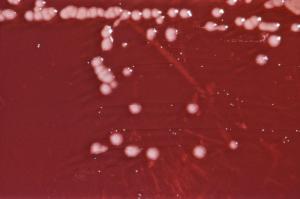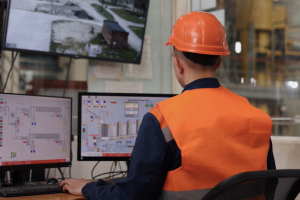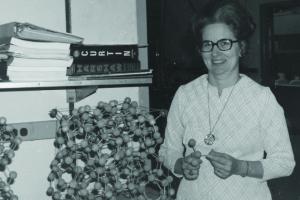
Pseudomonas aeruginosa bacterial culture on an Xylose Lysine Sodium Deoxycholate (XLD) agar plate.
Most water
treatment plants use chlorine to clean tapwater. The main drawback to this is that the process produces
carcinogens. The chlorine isn't totally effective either, leaving parasites like Giarrdia and
Cryptosporidium unaffected by the treatment.
A faculty/student team at
Tel Aviv University has determined the optimal UV
wavelength to keep water clear of
microorganisms. Bio-fouling, which refers to
bacteria's tendency to stick to surfaces, costs governments billions of dollars each year.
Using special multi-wavelength-emitting lamps, researchers investigated 220-280 nm wavelengths, discovering the 254-270 nm range to be the best at cleaning water of Pseudomonas aeruginosa bacteria.
This UV "zap" doesn't just kill microorganisms. It damages their
DNA, which helps prevent re-growth. This is where it distinguishes itself from the chlorine.
So far, this technique has no known negative effect on the water.
The researchers advocate using
UV light in conjunction with small amounts of chlorine for a comprehensive, more effective way to treat
drinking water.
 Pseudomonas aeruginosa bacterial culture on an Xylose Lysine Sodium Deoxycholate (XLD) agar plate.
Most water treatment plants use chlorine to clean tapwater. The main drawback to this is that the process produces carcinogens. The chlorine isn't totally effective either, leaving parasites like Giarrdia and Cryptosporidium unaffected by the treatment.
A faculty/student team at Tel Aviv University has determined the optimal UV wavelength to keep water clear of microorganisms. Bio-fouling, which refers to bacteria's tendency to stick to surfaces, costs governments billions of dollars each year.
Using special multi-wavelength-emitting lamps, researchers investigated 220-280 nm wavelengths, discovering the 254-270 nm range to be the best at cleaning water of Pseudomonas aeruginosa bacteria.
This UV "zap" doesn't just kill microorganisms. It damages their DNA, which helps prevent re-growth. This is where it distinguishes itself from the chlorine.
So far, this technique has no known negative effect on the water.
The researchers advocate using UV light in conjunction with small amounts of chlorine for a comprehensive, more effective way to treat drinking water.
Pseudomonas aeruginosa bacterial culture on an Xylose Lysine Sodium Deoxycholate (XLD) agar plate.
Most water treatment plants use chlorine to clean tapwater. The main drawback to this is that the process produces carcinogens. The chlorine isn't totally effective either, leaving parasites like Giarrdia and Cryptosporidium unaffected by the treatment.
A faculty/student team at Tel Aviv University has determined the optimal UV wavelength to keep water clear of microorganisms. Bio-fouling, which refers to bacteria's tendency to stick to surfaces, costs governments billions of dollars each year.
Using special multi-wavelength-emitting lamps, researchers investigated 220-280 nm wavelengths, discovering the 254-270 nm range to be the best at cleaning water of Pseudomonas aeruginosa bacteria.
This UV "zap" doesn't just kill microorganisms. It damages their DNA, which helps prevent re-growth. This is where it distinguishes itself from the chlorine.
So far, this technique has no known negative effect on the water.
The researchers advocate using UV light in conjunction with small amounts of chlorine for a comprehensive, more effective way to treat drinking water.




